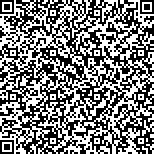下载中心
优秀审稿专家
优秀论文
相关链接
摘要

传统的气溶胶遥感反演算法在地表反射率较低、结构较为均一的海洋及浓密植被等区域的气溶胶反演可以达到较高的精度,而在城市、矿区等高亮度、高异质性区域的气溶胶反演中仍面临较大的挑战。当地表反射率较高时,卫星传感器获取的对气溶胶具有标识性的信息不足,导致了气溶胶反演的困难。为更大程度地挖掘卫星信号中对气溶胶具有标识性的信息,本文提出使用深度学习技术的气溶胶遥感反演算法,用于Landsat 8 OLI传感器的气溶胶反演。选择全球不同区域的AERONET站点气溶胶实测数据以及对应区域的Landsat 8 OLI传感器的观测几何角度和表观反射率数据,根据合理的时空匹配原则构建样本数据。选择深度置信网络,在合理设置训练批次和训练次数的基础上对网络进行训练和测试,生成关于卫星传感器数据的气溶胶光学厚度拟合网络模型,实现气溶胶遥感反演。使用独立的AERONET站点气溶胶实测数据对反演结果进行了验证,结果表明:该方法可反演不同地表类型区域连续空间覆盖的气溶胶光学厚度,且达到了较高的精度(R=0.8745,RMSE=0.0391,MAE=0.0616,EE=87.94%)。与传统的方法相比,本方法基于单时相卫星遥感数据即可实现气溶胶的高精度反演,简化了气溶胶反演的步骤,提高了气溶胶反演的稳定性和时空适应性。
Traditional methods of aerosol remote sensing inversion can achieve high accuracy in areas with low surface reflectance, homogeneous structures, and dense vegetation while facing serious challenges in highly bright and spatially heterogeneous areas, such as cities and mining areas. High land surface reflectance causes insufficient aerosol information acquired by sensors that can lead to difficulties in aerosol inversion. A remote sensing inversion method of Aerosol Optical Depth (AOD) using deep learning algorithm is proposed in this study to extract aerosol identification information from satellite signals further and apply it to Landsat 8 OLI data. Aerosol-measured data of Aerosol Robotic Network (AERONET) sites in different regions of the world and the corresponding geometric angle and apparent reflectance of the Landsat 8 OLI data are selected to construct sample data sets according to the reasonable space-time matching method. The Deep Belief Network (DBN) is applied to implement the proposed method. The network is trained and tested on the basis of the reasonable setting of training batches and times. An AOD fitted network model on satellite remote sensing information is then generated to achieve aerosol inversion. Inversions are verified using independent AERONET-measured data. The verification showed that the proposed method can realize AOD inversion with continuous spatial coverage over different surface types and high accuracy (R = 0.8745, RMSE = 0.0391, MAE = 0.0616, and EE = 87.94%). Compared with traditional approaches, the proposed method can achieve high-accuracy aerosol inversions using only single-phase satellite remote sensing data, simplify the steps of aerosol inversion, and improve the stability and time–space adaptability of the results.

